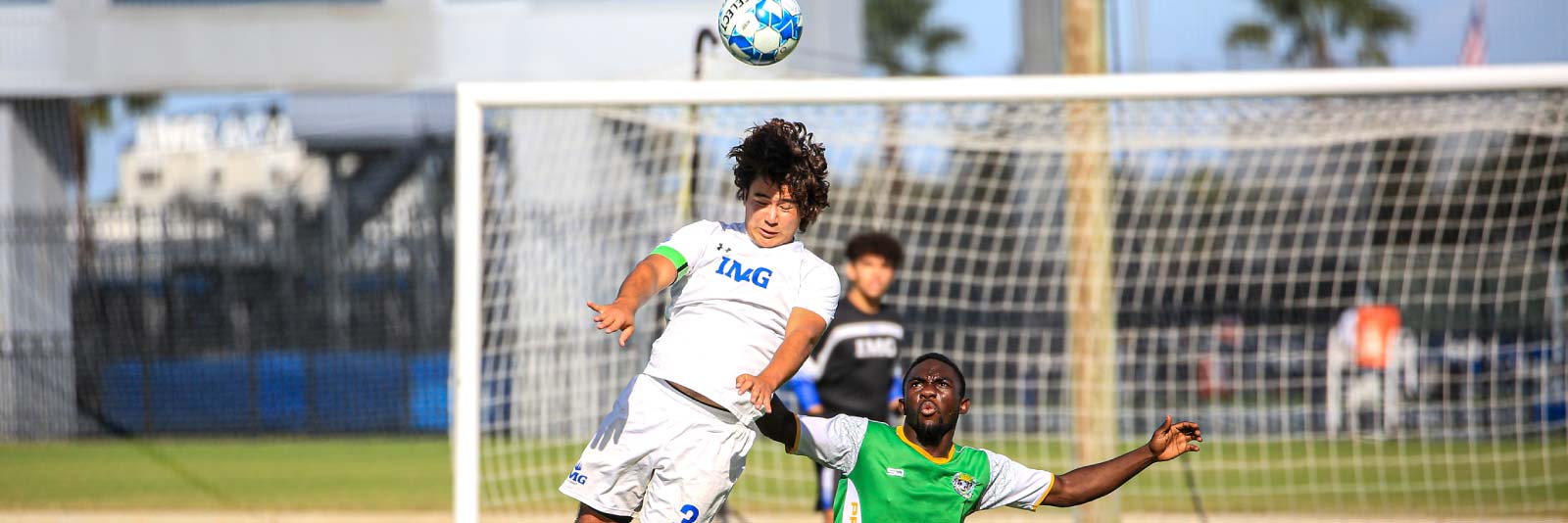Soccer Scholarships for International Students

Many college soccer teams in the U.S. look to fill out their rosters by recruiting international students, and it’s a trend that is not going away anytime soon. In fact, during the 2016–2017 school year, there were 39,888 college men’s soccer players in the U.S. Of these players, 2,664 were international recruits. Therefore, international players accounted for 21.3% of men’s college soccer roster spots at the D1 and D2 levels. According to research done at NCSA, 74% of D1 college programs recruit players internationally, 70% of D2 and NAIA college programs recruit internationally, and 33% of D3 college and junior college programs recruit internationally.
Whether international recruits are looking to get more playing time than their semi-pro team can offer them, or they simply want to get a good education while studying abroad, U.S. colleges can be an appealing option. Coaches at most U.S. college teams simply want to recruit the best players they can, regardless of where they came from. However, international recruits will have to put in extra effort to get recruited through an already difficult and time-consuming process. In addition to reading NCSA’s Recruiting Guide and the NCAA’s Guide to International Academic Standards for Athletics Eligibility, potential recruits should refer our recommendations on how to get recruited for men’s soccer as an international athlete and the international athlete’s guide to athletic recruiting in the U.S.
Make a soccer recruiting video
This is one of the most important steps for international athletes to take in the recruiting process, so families should make sure it’s done well. Coaches in the U.S. prefer to see athletes play in person, but they do also watch a lot of recruiting videos when it comes to evaluating athletes. For international athletes, the recruiting video will be the only way to show off their soccer skills, so extra attention should go into it. Read our men’s soccer recruiting video guide and check out more tips on how to make your best recruiting video.
Do research ahead of time
International recruits do not have the luxury of hopping in a car and driving to a university to see how the campus looks. Many aspects of the recruiting and college application process will be difficult to find help for, so it’s important to do plenty of research. Here are some topics to get started:
- Learn what the different division levels mean. Within the NCAA, there are three division levels: Division 1, Division 2 and Division 3, with D1 being the most competitive. There is also the NAIA, which compares to D2 teams in many cases, and junior colleges. Each division level offers a unique college experience and can potentially be the right fit for an international student-athlete.
- The NCAA and NAIA have documentation requirements for international student-athletes to compete in college sports. Learn about requirements for NCAA D1 and D2 schools, as well as requirements for NAIA schools.
- Learn about what it’s like to live on different college campuses. There are many factors that contribute to the college experience, including local weather, campus diversity, facilities and campus location.
- Become familiar with the types of scholarships that are available. Factors such as division level, sport and athletic talent determine whether athletes receive a full or partial scholarship. Some schools that do not offer athletic scholarships can help connect families with other types of scholarships or financial aid instead. Read up on the different types of offers.
Review academic eligibility requirements
The NCAA and NAIA have specific documentation requirements for international student-athletes to be academically eligible to compete in college sports. If you’re interested in NCAA D1 or D2 sports, review their academic requirements. Here are a few quick highlights to get started:
- Provide academic records for years nine and up in English and applicant’s native language
- Provide proof of graduation, including certificates, diplomas and final exams
- Take the ACT or SAT standardized test and send scores to the NCAA
- Find out about country-specific requirements and documentation
- NCAA schools issue Form I-20 visas, not the NCAA. Work with an interested school to secure a visa and note that an F1 student visa has specific requirements for eligibility.
It will also be important to learn about different requirements for NAIA schools. Here are some steps to take:
- Register with the NAIA Eligibility Center at least two months before beginning classes at a NAIA school
- Take the ACT or SAT standardized test and send test scores to the NAIA using code 9876
- Have the athlete’s secondary, high school, post-secondary and/or university send records to the NAIA
- Translate all records to English
- Read the NAIA’s international resources document and send questions to [email protected].
Start early and be proactive with communication
Coaches in the U.S. start filling their roster spots as soon as they can in order to avoid losing top recruits, so it’s important to be proactive about reaching out to coaches early on. Here are a few tips for contacting coaches:
- Write emails that are unique to each program. Coaches receive a lot of emails and are quick to discard generic ones. Also, international students need to make an impression without meeting the coach in person. Potential recruits can grab a coach’s attention by explaining exactly why they’re interested in the program.
- Don’t bring up scholarship money at first. Yes, it’s on everyone’s mind, but coaches first want to get to know the recruit. Once the recruit has developed a relationship with the coach over a period of time, they can ask about the coach’s interest in them and if they have scholarship money available.
- Always include the newest version of your recruiting video. For international recruits, the recruiting video is likely the only way a coach can see them play. Make sure the video really showcases athletic talent and skills.